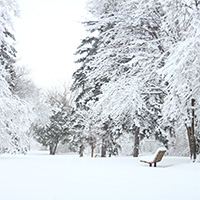
Do your joints start to ache when the temperature drops? Can your body sense when a storm is coming? You’re not imagining things—and you’re not alone. According to the CDC, 1 in 4 American adults has arthritis, and many experience increased arthritis pain in cold weather.
At Iowa Ortho, we understand how frustrating seasonal joint pain can be. Here’s why cold temperatures affect your joints—and what you can do to feel better this winter.
Why Does Cold Weather Make Arthritis Pain Worse?
When it gets colder, the barometric pressure in the atmosphere drops. This shift can cause joint tissues to expand slightly, leading to discomfort in people with osteoarthritis or inflammatory arthritis.
Additionally:
- Synovial fluid—the lubricant in your joints—becomes thicker in the cold, making it harder for your joints to move smoothly.
- Cold temperatures can slow blood circulation, increase muscle spasms, and cause joint swelling, which adds pressure on pain-sensitive nerves.
The result? More stiffness, more inflammation, and more pain.
Tips to Manage Cold Weather Arthritis Pain
Fortunately, there are several things you can do to protect your joints and reduce pain during colder months.
Keep Warm with Heat Therapy
- Use a heating pad, electric blanket, hot shower, or hot tub to soothe stiff joints.
- Heat improves blood flow and relaxes muscles.
Dress in Layers
- Wear lightweight wool as a base layer—it keeps warm air close to your skin.
- Add a fleece or down vest to insulate your core.
- Don’t forget gloves, mittens, and thick socks—extremities lose heat quickly.
- Consider compression garments to help reduce swelling.
Stay Active
- Aim for 150 minutes of moderate aerobic activity per week, plus two strength training sessions.
- Too icy to walk outside? Head to the mall, indoor track, or treadmill.
- Staying active boosts circulation and helps prevent stiffness.
Eat a Joint-Friendly Diet
- Choose foods rich in omega-3 fatty acids to reduce inflammation.
- Examples: Fatty fish, chia seeds, walnuts, flaxseeds.
- Maintain a healthy weight to reduce pressure on your joints.
Stretch Regularly
- Stretching helps loosen stiff joints and reduces the risk of injury.
- Warm muscles are more flexible and responsive to movement.
Get Enough Vitamin D
- Less sunlight in winter means less vitamin D—which may worsen arthritis pain and lead to bone loss.
- Eat vitamin D-rich foods or take a daily supplement.
Stay Safe Outdoors
- Wear non-slip shoes with good traction.
- Stay on cleared sidewalks or use indoor routes.
- Bundle up to keep your muscles warm and maintain balance.
- Use assistive devices if needed to stay steady.
Try Over-the-Counter Relief
- OTC pain relievers with NSAIDs can help ease inflammation and pain.
- Always consult your doctor before starting a new medication.
Need Help Managing Your Arthritis Pain?
At Iowa Ortho, our specialists are here to help you manage arthritis year-round—especially when colder weather sets in.
Schedule an appointment online or call us at 515-247-8400 to learn how we can help you move more comfortably.
